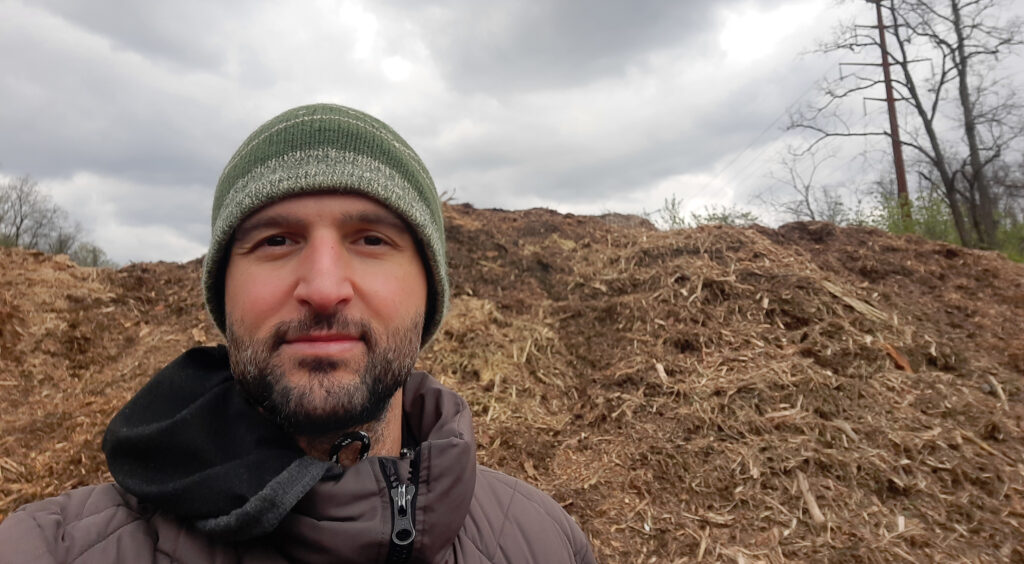
The virtues of wood chip mulch
I’ll be the first to admit that I’m a little obsessed when it comes to building soil. Healthy, fertile soil is the basis for abundance in the garden. With good soil comes good crops.
From my perspective, one key to rich garden soil is abundant organic matter. As dead plant matter–such as leaves, branches, and logs–breaks down, it feeds new life.
I’m always looking for ways to add more organic matter to my garden. I’m always looking for ways to build soil.
One great source of organic matter is wood chips.
You’ve probably seen wood chips being used as mulch in gardens and playgrounds. There are good reason for this:
- By covering up the bare ground, wood chips slow down water loss and weed growth.
- Wood chip mulch can moderate soil temperature, helping the soil avoid extreme temperature changes.
- Wood chips provide a soft, cushiony feel, making it more pleasant to walk, work, and play.
- My sense is that wood chip mulch also slows down the flow of rainwater along the surface of the ground, reducing soil and water loss from runoff.
- And as the wood chips break down over time, they add organic matter to the soil.
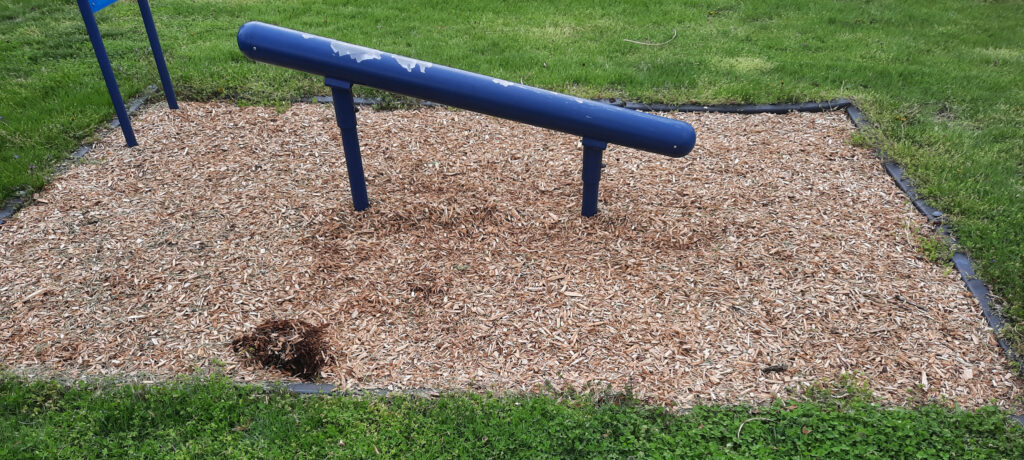
Contrast wood chips with plastic tarp, which is also used as a sort of “mulch”. Plastic tarp, because it’s relatively impermeable, is better at preventing weeds and water loss. But this goes the other way too, because plastic tarp can also prevent rainwater from reaching the soil. Gas exchange is also pretty limited, so the soil doesn’t breathe well.
Another difference is that, unlike wood chips and other organic mulches, plastic tarp does not add beneficial nutrients to the soil. In fact, as the plastic breaks down, it may actually be adding toxins to the soil.
You can read more about my experiences with plastic tarp mulch in this article.
All in all, there are pros and cons to both organic and plastic mulches. As you may have guessed, I prefer organic mulch.
The seeds are planted
My love of wood chips started a few years ago in the Bronx, New York. I was in grad school and needed an outlet for my gardening passion.
One spring day, I was at a farmers market at a church in my neighborhood. I found out that the church also had a community gardening project. And they were looking for volunteers. What’s more, they were using permaculture principles.
A permaculture garden? In my neighborhood? Looking for volunteers? I was in!
For the rest of the spring, summer, and fall of that year, I was in the garden almost every Saturday. And the one task I helped out with more than any other was spreading wood chip mulch. It was as if we were trying to cover as much of the bare ground on that half-acre with wood chips.
Over time, I really came to love wood chips. I appreciated their many benefits for soil, plants, and people (see previous section). I enjoyed the meditative exercise of shoveling them into the wheelbarrow, pushing and unloading the wheelbarrow, spreading them with a rake, and going back for more. I watched the bare soil steadily being blanketed with nourishing mulch. It all gave me a sense of contentment, of doing something good for the world.
But where did all those wood chips come from?
Every so often, an arborist would drop off a truckload of them. Imagine a 4-6′ tall, steaming hot pile of wood chips, just waiting to be spread out and become soil.
So another important lesson I learned on that gardening team was this: arborists need places to unload their wood chips. And thanks to the garden director’s resourcefulness, this particular arborist unloaded their wood chips at our garden.
The seeds were planted in my mind: wood chips are valuable, and you can get them from arborists.
An unexpected turn of events
Fast forward a few years. I wanted some wood chips to use in my garden. So last week, I started searching for arborists in my area. (One could also use the search term “tree service”)
I found a few on Google Maps (one of my favorite online tools). Taking a look at the street and satellite views on Google Maps, I saw that Good’s Tree Care appeared to have a gigantic pile of wood chips at their facility. I called them and later drove the car there.
I was soon talking to the guy in charge of wood chips. He said that I was certainly welcome to take some wood chips if I wanted. But given that I wanted a relatively small amount (enough to fit in a car) to use in a home garden, he suggested an interesting alternative: a municipal composting facility.
Apparently this facility had a variety of organic materials, including some that would be more well composted than the relatively fresh wood chips at Good’s. That sounded good to me, so I decided to go there instead.
Eureka! Striking organic gold
The day after my trip to Good’s Tree Care, I made the drive out the Swatara Township Composting Facility. What an incredible place!
Driving past the front gate, I came to a sign at a fork in the road: to the right were the leaves, and straight ahead were the wood chips. The leaf section was closed off by a gate, so I drove ahead towards the wood chips.
A little ways down the road, one of the workers flagged me down. I told him I was looking for free wood chips, and he directed me to some big piles further down the road. Apparently this is where arborists drop off their chipped wood. He said I could take as much as I wanted!
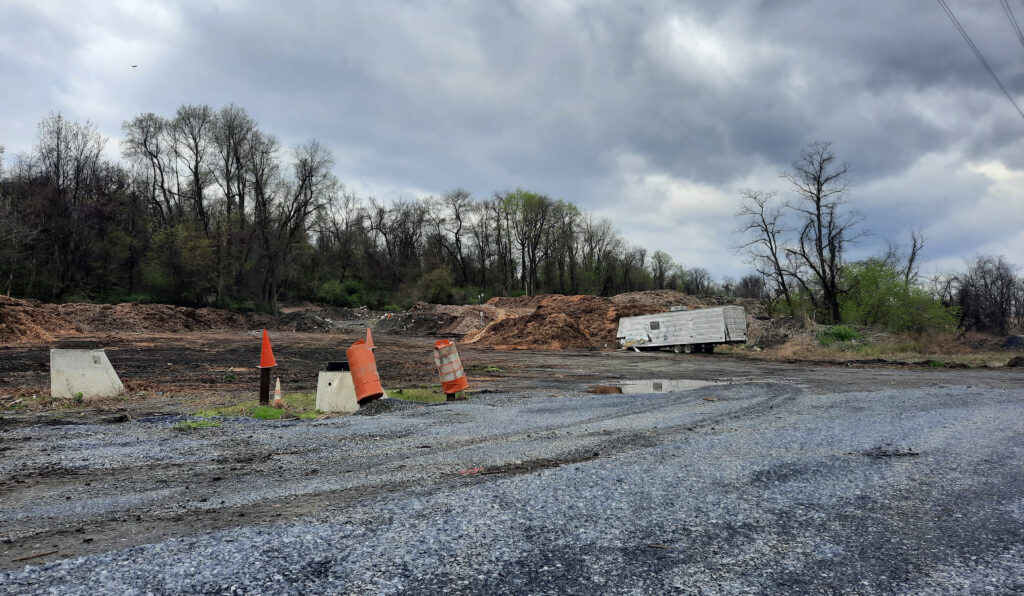
After backing the car up to a mountain of wood chips, I took out my equipment and got to work. First, I put some tarp down in the trunk and back seat to keep the car clean. Then, using a pitchfork, I filled three plastic tubs with wood chips. Next, I used my hands to scoop wood chips into burlap bags. Finally, I loaded all of these into the car.
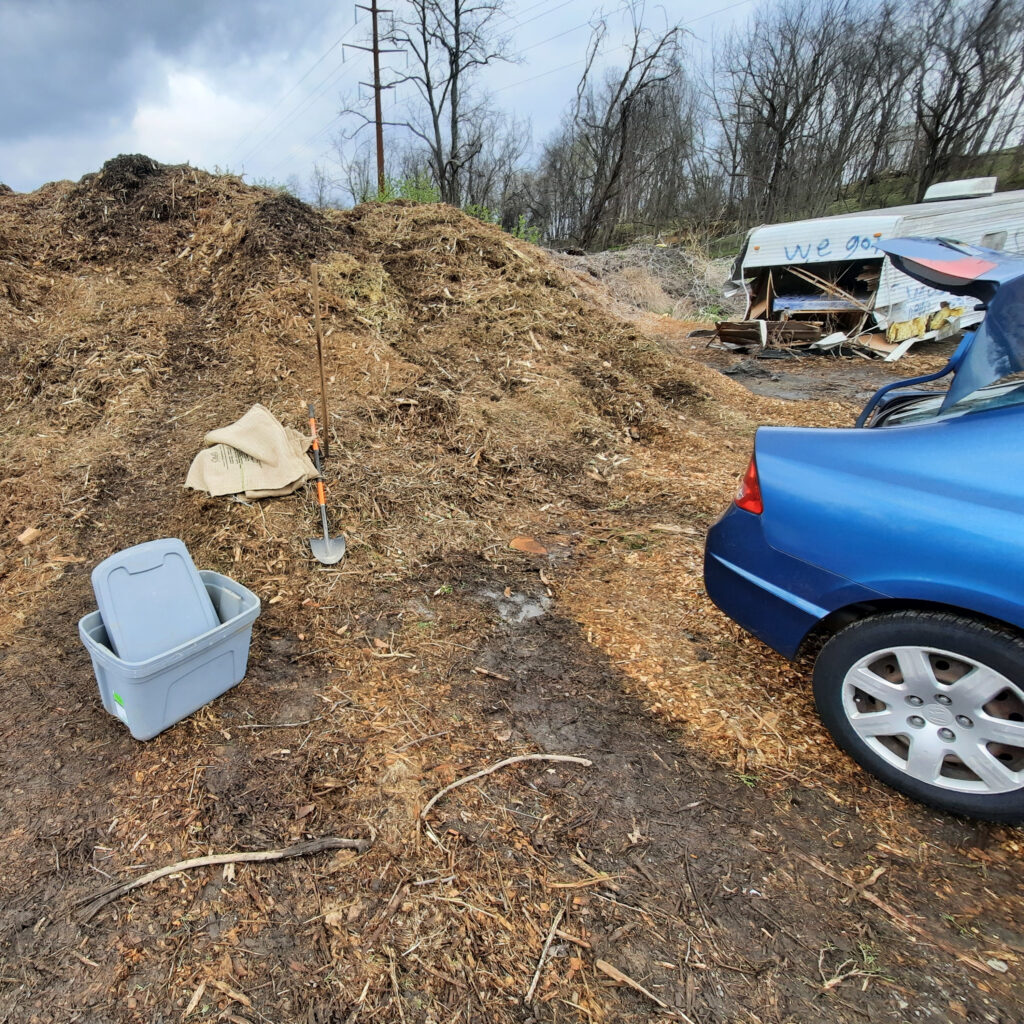
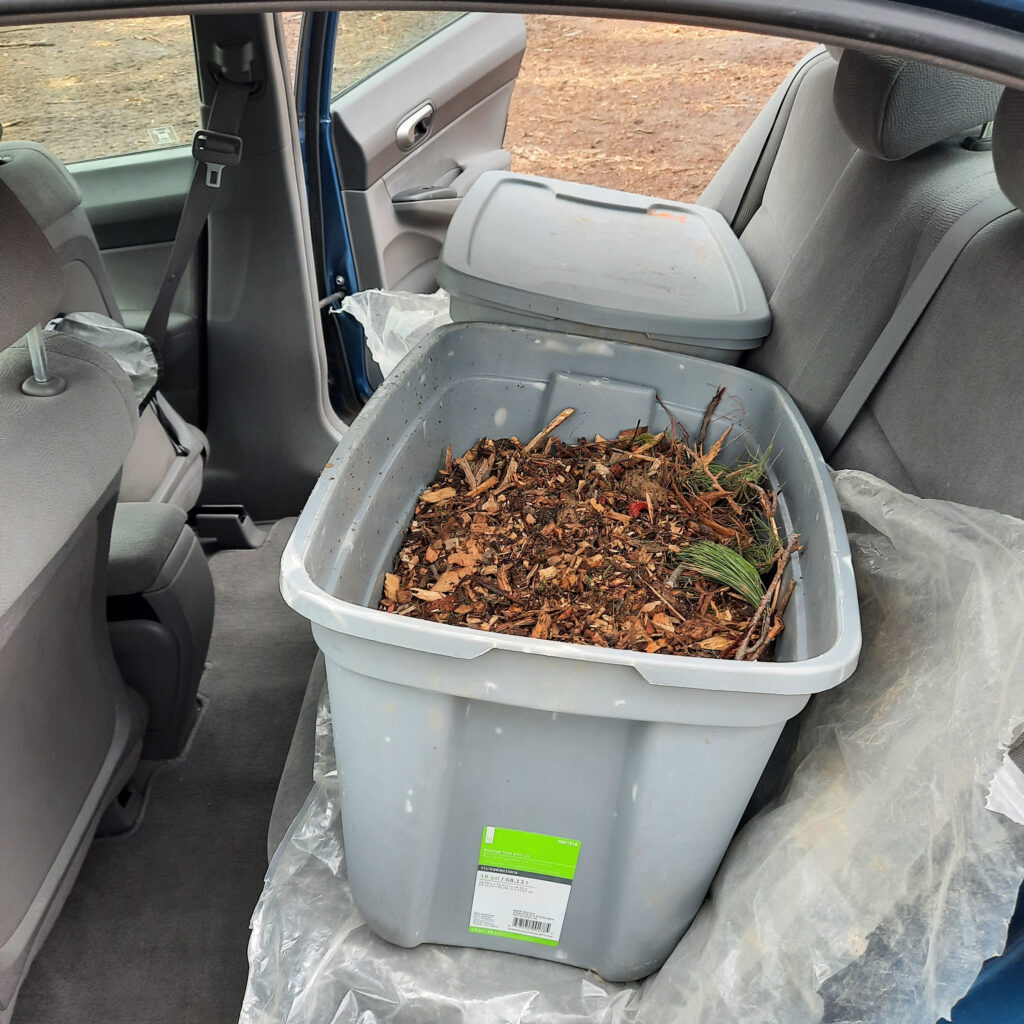
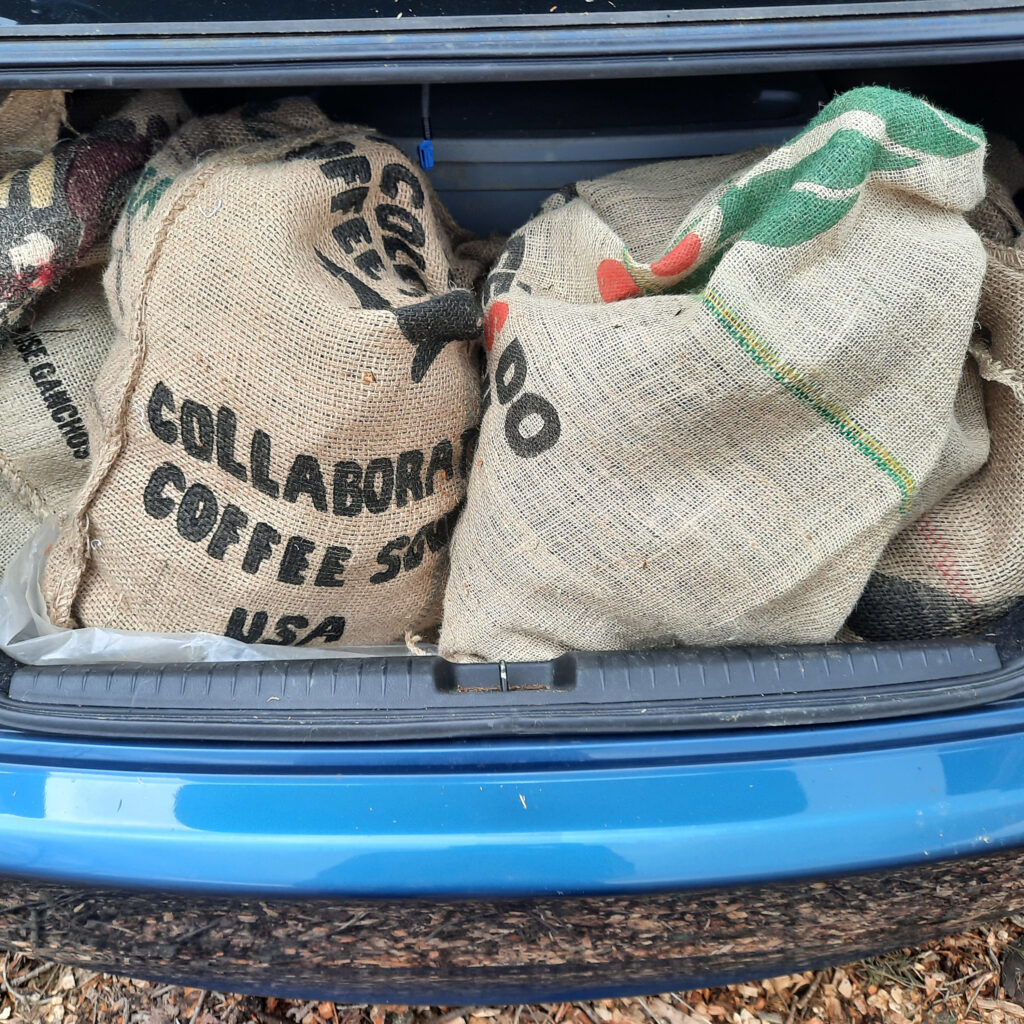
I collected a variety of wood chips that day, sampling from different parts of the pile. Apparently, several different batches had been dropped off there. Some of the wood was more finely shredded, while some was in larger chunks. Some smelled refreshing and piney, while others smelled earthy and fungal. Some were steaming hot (a sign of active decomposition), while others were cooler and more decomposed.
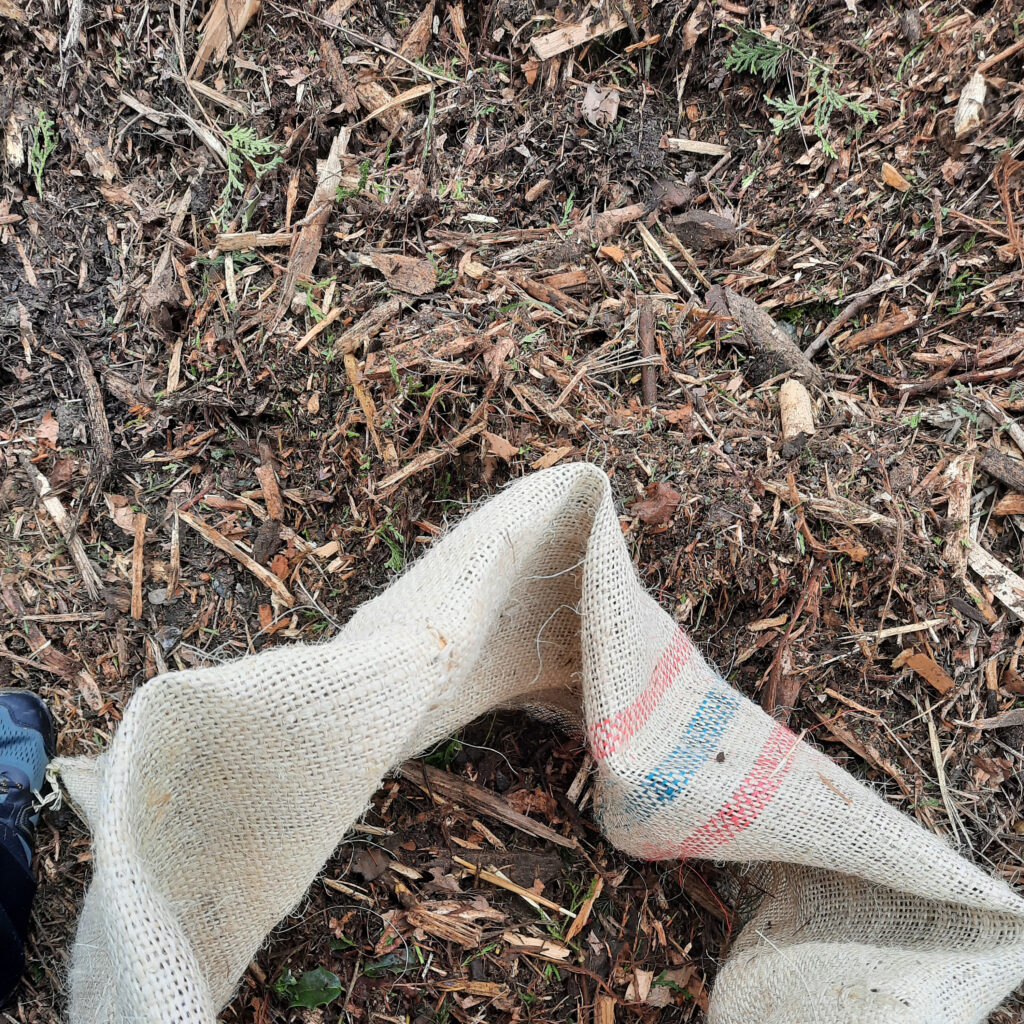
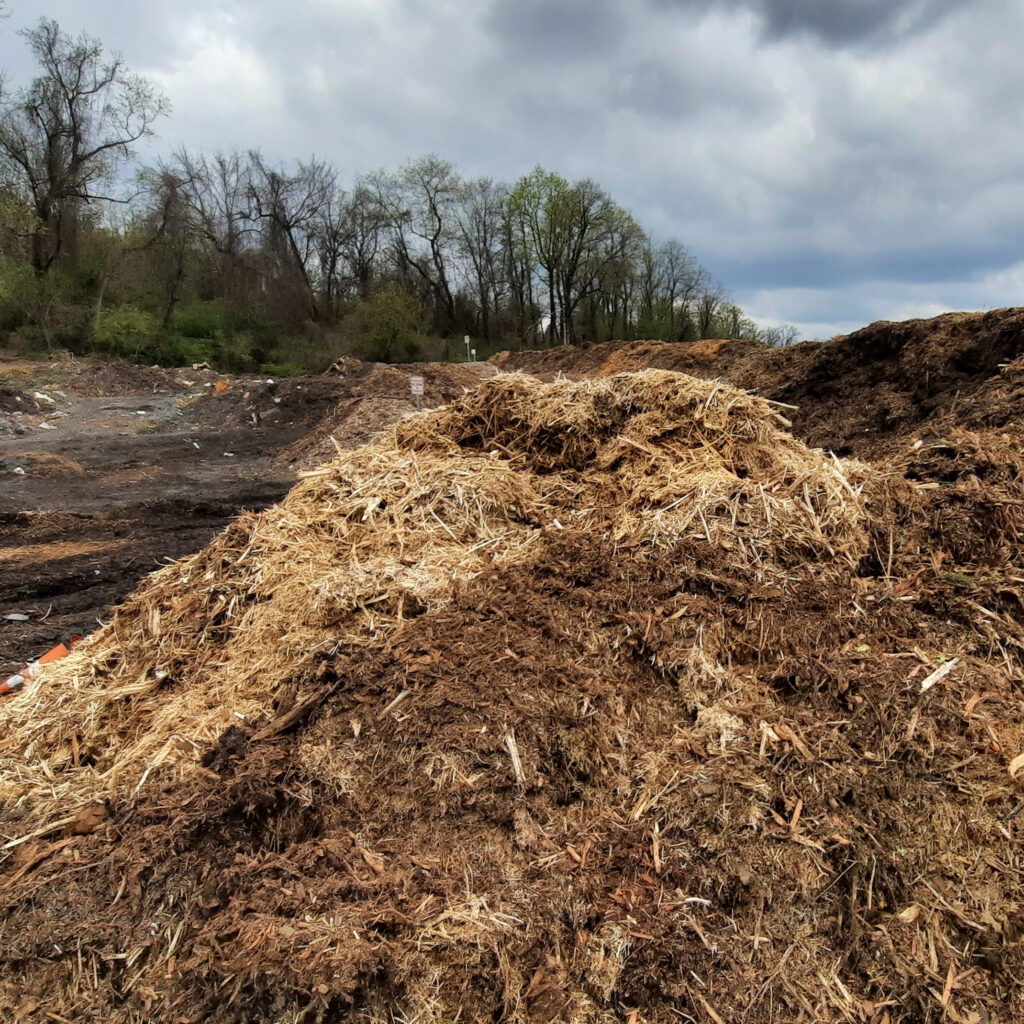
This video gives an idea of just how hot some part of the pile were:
On my way out, I stopped to talk to the same worker from before. I asked if they ever ran out of wood chips. He said, “never.” But apparently they run out of the leaf compost pretty quickly.
From what I gathered, the leaf compost if the good stuff. The leaf litter collected by the municipality in the fall is screened to remove trash and then fermented over the winter. By the time spring rolls around, it’s pretty well decomposed and makes a great soil amendment. He was telling me that he works the leaf compost into his own garden soil and gets huge tomatoes!
Alas, by the time I got to the composting facility, all of their leaf compost was gone. The facility opens every year on April 1. And by April 19–when I went there–there was none left.
So the leaf compost must have been what the arborist was telling me about. Although I didn’t snag any this year, I know for next year to show up on opening day!
Looking back, looking ahead
One thing leads to another. A few years ago in the Bronx, I was looking for an opportunity to garden and learn permaculture. Through that experience, I learned about the benefits and joys of working with wood chips. My love of mulch grew.
This year, starting with a local arborist, I was led to a composting facility that has wood chips AND leaf compost. In retrospect, I could have searched for “composting facility” and found it directly. But hindsight is 20-20. Sometimes it pays to just get out there.
I’m really excited to continue this journey of discovery. Now that I have all of these different kinds of wood chips, I’m going to play around with them in my garden. Not only do I plan to use them for mulch, but I also have some other creative ideas for them.
But I’ll save that for another time. 🙂
Resources
- Swatara Township Composting Facility (official site) (Google Maps): the place where I ultimately got my free wood chips from. Come early in the season (opens April 1) for leaf compost. You can just show up here during their business hours and get what you want; no need to call ahead.
- Good’s Tree Care (official site) (Google Maps): my friendly, neighborhood arborist that told me about the Swatara Township Composting Facility. If you want to get wood chips from an arborist, be sure to call them before you go.
- ChipDrop: a delivery service that connects arborists with gardeners who want free wood chips. I’ve never used this before, because I don’t currently have a place to accept a whole truckload of wood chips. But if I ever do, I would give this a try.
- Craigslist and Nextdoor: I’ve seen ads for free wood chips (among other free stuff) on sites like these.
Did you learn anything new here? Any cool tips, tricks, resources, or stories to share? I’d love to hear from you in the comments below!
[…] few weeks ago, I wrote about how I got some free wood chips from a local composting facility. Much of my discussion about the […]
[…] name is Taylan Morcol. A few years ago, I was part of the Green Team/Earth Ministry (GTEM), a group of volunteers taking care of the community garden at Church of the […]